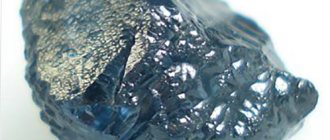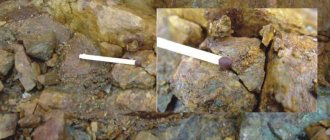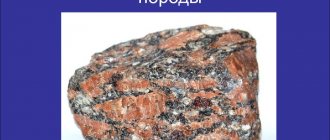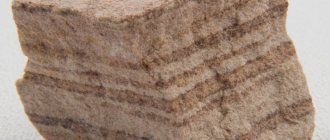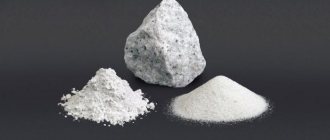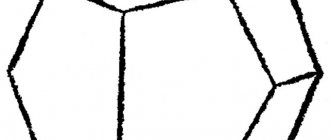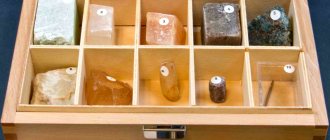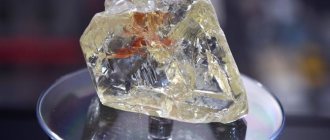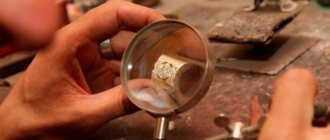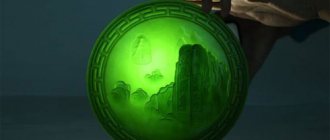Thermal conductivity, heat capacity and thermal diffusivity of primary sediments and rocks
The table shows the values of the thermal conductivity coefficient, specific heat capacity and thermal diffusivity coefficient of primary sediments and rocks at room temperature.
Properties are given for the following sediments and rocks : sediments and sedimentary, metamorphic rocks and ores formed from them: breccia, conglomerate, dry gravel, sandy silt, dry sand, wet sand, oil-saturated, quartzite, silty-clayey silt, siltstone, clayey silt, clay dry, wet, mudstone, clayey shale, phyllite, slate, tripolite (diatomite, diatomite tripolite), globigerine silt, chalk, limestone, marble, dolomite, marl, gypsum, anhydrite, pure rock salt, sylvinite, martite and magnetite ore, martite jespelite-like, magnetite-martite hornfels, martite, peat, coal, graphite.
Igneous and metamorphic rocks and ores formed from them: dunite, peridotite, pyrixinite, serpintinite, gabbro, diorite, syenite, granite, basalt, andesite, trachyte, obsidian, pumice, diabase, porphyrite, quartz porphyry, pegmatite, tuff, lava, slate , crystalline schist, gneiss, amphibolite, eclogite, hornfels, skarn, charnockite, ore: sulfur pyrite, copper, dense phenocryst, pyrite to quartz, staffelite-magnetite, apatite-forsterite-magnetite, magnetite.
Ultraviolet camera
It should be noted here that ultraviolet waves are very dangerous to the eyes. Often ultraviolet light can be used to analyze jewelry. Traditionally, two ultraviolet wavelengths are used in gemology:
- short (UVC) with a wavelength of 254 nm;
- long (UVL) with a wavelength of 365 nm.
Depending on the wavelength, gemstones may remain inert and not produce any luminous phenomena, but may also react to one or both radiations.
All of this information, coupled with standard gemstone testing, can provide valuable information.
Thermal conductivity of rocks
The table shows the thermal conductivity values of rocks and minerals (average value, minimum and maximum) at room temperature in the dimension W/(m deg).
The thermal conductivity of sedimentary rocks is indicated : mudstone, shale, clay, dolomite, limestone, rock salt, chalk, sandstone, peat, coal, silt, clay, sand.
Thermal conductivity of igneous rocks : basalt, granite, diabase, lava, obsidian, tuff. Thermal conductivity of metamorphic rocks : gneiss, quartzite, marble, slate.
The thermal conductivity of rocks varies over a fairly wide range. The values in the table show that its value ranges from 0.07 W/(m deg) for peat (sedimentary rocks) to 7.6 W/(m deg) for quartzite, which is a metamorphic rock.
Binocular microscope
A binocular microscope, necessary in a gemological laboratory, will allow you to see the subtleties of the inner world of a precious stone, provide information about the nature, origin, quality of cut, etc.
The Darkfield lighting system will provide maximum contrast for observing inclusions, and polarizing filters will also highlight certain inclusions (these polarizing filters will allow you to turn your binocular microscope into a polariscope). For example, a blue color filter will allow you to see curved areas of a bright yellow Verneuil synthetic sapphire that would otherwise be difficult to see.
The gemstone support clamp is very useful for moving the mineral directly under the eyepiece and keeping it in position when you see something interesting.
Furthermore, observation in the immersion cell between intersecting polarizing filters can reveal certain inclusions or texture defects that are sometimes not otherwise visible, such as certain curved zones in synthetic sapphires produced by the Verneuil method.
Density of rocks and minerals
The table gives the density values of rocks and minerals at room temperature in kg/m3 units.
The densities of the following minerals and rocks are presented : alabaster agate (carbonate and sulfate), diamond, albite, andesite, anorthite, asbestos, asbestos shale, basalt, beryl, beshtaunite, gas coal, galena, hematite, gypsum, clay, garnet, granite, dolomite, limestone, slaked lime, calcite, quartz (fused, transparent, opaque), coke, corundum, flint, magnetite, malachite, chalk, marl, marble, emery, opal, pumice, sandstone, pyrite, feldspar, porphyry, horn blende, serpentine, slate, mica (white, regular, black), rock salt, talc, topaz, dry peat, thorianite, thorite, trogerite, tourmaline, lava tuff, coal (anthracite, bituminous), uranite (calcium, copper), fluorite
The density of rocks ranges from 500 to 9325 kg/m3. It should be noted that the average density of rocks is about 3.3 kg/m3 . The most dense of the rocks presented in the table is the mineral thorianite - its average density is 9325 kg/m3. The rocks with the lowest density include peat and pumice - their average density is 500 kg/m3.
Note: Be careful! The density of rocks and minerals in the table is indicated in powers of 10-3. Don't forget to multiply by 1000. For example, the density of diamond is 3010-3520 kg/m3.
Hydrostatic weighing method
This method is time consuming and comparatively cheaper.
Hydrostatic weighing method
First, a stone is hung on a thin wire from a hydrostatic balance and its weight is measured in air. Then the stone is immersed in water and its weight is measured again. After weighing, the water volume of the stone is determined by subtracting the weight of the stone in water from the weight of the stone in air. After determining the water volume of the stone, the density of the stone is calculated using the following formula P=M:V
- P is the density of the stone.
- M is the mass of the stone.
- V is the water volume of the stone which is determined by subtraction. V= suspended mass in air - suspended mass in water.
Heat capacity of rocks and minerals
The table shows the values of the mass specific heat capacity of rocks and minerals at temperatures from 73 to 1473 K in kJ/(kg deg).
The heat capacity values of the following minerals are given : andalusite, apatite, asbestos, augite, beryl, borax, basalt, gypsum, gneiss, granite, natural graphite, soil (soil, earth), lunar soil from the Sea of Plenty, dolomite, kaolin, volcanic lava, malachite , mica, talc, spinel, scheelite.
Sources: 1. Physical quantities. Directory. A.P. Babichev, N.A. Babushkina, A.M. Bratkovsky and others; Ed. I.S. Grigorieva, E.Z. Meilikhova. - M.: Energoatomizdat, 1991. - 1232 p. 2. Dobrynin V.M., Vendelshtein B.Yu., Kozhevnikov D.A. Petrophysics (Physics of rocks): Textbook. for universities. 2nd ed. reworked and additional edited by Doctor of Physical and Mathematical Sciences D.A. Kozhevnikova - M.: Federal State Unitary Enterprise Publishing House "Oil and Gas" Russian State University of Oil and Gas named after. THEM. Gubkina, 2004, 368 pp., ill. ISBN 5-7246-0295-4.
Man made stones
Everything written above applies to natural stones. And now it's time to talk about artificial ones. They can be wall, road and side. This should also include concrete roofing tiles and paving slabs, as well as all kinds of blind areas, stair steps and chimney elements.
In the production of almost all of the listed stones, both in Russia and abroad, strict technical standards are used. They regulate all the main characteristics - the quality of the starting materials, the dimensions and shape of the section, physical and mechanical parameters (including the density of concrete stones).
These requirements depend on the expected operating conditions and the available material.
Refractometer
This is perhaps the most efficient device in terms of outputs. Refractive index remains one of the most repeatable and reproducible measurements in gemology.
When using this device, liquid is required to bring contact between the prism (or work table) and the stone being examined.
This liquid is diiodomethane, saturated with sulfur and other compounds.
Its toxicity is even greater than that of diiodomethane alone. Therefore, refractive index measurements should be carried out in well-ventilated areas.
A monochromatic light source corresponding to the sodium D-line (yellow-orange portion of white light) is the best illumination for this analysis and will give more accurate measurements.
However, the index can be determined by white light by focusing on the orange color of the spectrum, which will be observed on the scale.
The refractive index will not be the only data that a refractometer will give you, as it will also give you information about birefringence, the optical nature.
Refractometer coupling fluid
The liquid used to contact the facets of the stone being analyzed and the refractometer prism must have the highest possible refractive index.
Saturation of diiodomethane (CH2I2) with natural sulfur (S8) results in a liquid with a refractive index of about 1.788. Caution, this liquid is toxic by contact, inhalation and if swallowed.
To obtain a liquid with an even higher refractive index (about 1.810), a recipe was presented on the SBG website:
- Diiodomethane 100 g.
- Tetraiodoethylene 25 g.
- Sulfur 15 g.
Caution again: This liquid is toxic by contact, inhalation and if swallowed. Work in a well-ventilated area with all protective measures specified in the material safety data sheets for these products.
UVC
Most diamonds (often type I) and their imitations completely absorb short-wave ultraviolet radiation (254 nm). However, rare Type IIa, IIb diamonds or some imitations such as lithium niobate are transparent to UVC.
The color of Type IIa brown diamonds can be noticeably improved (i.e. the stone becomes colorless) using HPHT treatment.
Thus, UVC would be a simple step that could raise the question of possible HPHT treatment of colorless diamond.
This camera can also be used to distinguish natural colorless sapphires from synthetic ones.
To perform this test, simply place the stone over the hole and secure it with Rodico paste, seal the joint between the stone and the hole, and then place the stone under a UV lamp.
If the stone is transparent to UVC, the chamber base (silicon wafer) will turn green, if not, it will remain inert. Note that UVC absorption (and therefore transparency) is related to the thickness of the material it passes through.
A stone such as CZ (cubic zirconia), depending on its thickness and/or viewing conditions (ambient lighting, visual acuity of the observer, etc.) may be opaque or slightly transparent.
Filters:
- Chelsea;
— Hanneman filter for synthetic emeralds;
— Hanneman filter for tanzanite;
- Interference.
Filters are powerful allies, able to evaluate a batch of stones very quickly and provide a starting point when a synthetic stone is detected.
As with all analysis equipment, do not draw conclusions until you have confirmed your doubts with other measurements and other methods.
Synthetic emeralds made in an anhydrous solution appear bright red through a Chelsea filter, while natural emeralds are typically dark red.
But be careful, sometimes some natural emeralds can look bright red, and some synthetic emeralds, especially hydrothermal process emeralds, can look dark red.
These shades of red are usually related to the amount of chromium and/or the intensity of the red fluorescence the stone produces.
Spectra produced by the 486 nm interference filter are seen through a portable diffraction grating spectroscope (top) and a portable prism spectroscope (bottom).
Benefits for gemology:
Sometimes the literature gives meanings for "gem dispersion". It is often given as "BG".
Note: B and G are the names of specific lines that appear in the solar spectrum (Fraunhofer lines). Each of these lines corresponds to a specific wavelength (and sometimes several).
There are other lines, named with a letter due to their greater intensity in the solar spectrum:
- Line B at 686.7 nm: deep red.
- Line C at 656.3 nm: red.
- Line D at 589 nm: yellow-orange.
- Line E at 527 nm: green.
- Line F at 486.1 nm: light green.
- Line G at 430.7 nm: blue.
- H line at 410 nm: violet.
Thus, "B - G dispersion" indicates the difference between the refractive indices of a material as measured by the wavelengths corresponding to the B and G lines.
Magnifiers
The magnifying glass is like a gemologist’s third eye; he never leaves it.
The first analysis remains analysis using a magnifying glass, which provides information about inclusions, facet surfaces, etc.
The contrast comes from the fact that the inside of the stone is illuminated while the stone is seen against a matte black background. In the field, a darkfield magnifier with a flashlight is a first-class tool for effectively visualizing inclusions.
Magnifiers must be achromatic (not changing colors) and aplanatic (not distorting the object being viewed). Triplets are the best choice to achieve results.
The usual choice for gemologists is 10x magnification.
Polariscope
The polariscope makes it possible to analyze the optical character of a gemstone, whether it is rough or faceted, very quickly and efficiently.
This device, based on the phenomenon of polarization of light by various crystal networks of stones, really allows you to determine:
— whether the stone belongs to the cubic system or is an amorphous substance;
— does the stone belong to other crystal systems;
— does the stone microcrystallize (for example, chalcedony);
— does it contain internal tension (for example, grenades, glass, etc.).
Hardness
| Mohs hardness | Name of the stone |
| Talc | |
| Gypsum | |
| Calcite | |
| Fluorite | |
| Apatite | |
| Orthoclase | |
| Quartz | |
| Topaz | |
| Corundum | |
| Diamond |
The hardness test, usually used on stones, can sometimes lead to correct conclusions. For example, if a sample of material is not scratched by topaz, but only by corundum, the hardness will be on the order of 8.5 (between 8 and 9). We can then look for what material has a hardness of 8.5 (for example, synthetic zirconium oxide).
